25 witnesses from around the world, from fishermen to climate experts, from astronauts to students, from oceanographers to doctors, were interviewed to understand how space technologies and applications are making a difference in achieving the 17 United Nations Sustainable Development Goals (SDGs). The SDGs are a call to action for all countries to promote prosperity while protecting the planet. They recognize that ending poverty must go hand in hand with strategies that expand economic growth and address a range of social needs, including education, health, social protection, and employment opportunities, while combating climate change and protecting the environment.
Space for Our Planet explains how satellite Earth observation provides scientists with critical data on glacier melt, sea level rise, and weather events to help them analyze the impact of climate change and how to prepare for it. Telecommunications and geolocation satellites connect us in the most remote parts of the world, improve access to health and education, and optimize the management of our travel.
The exhibition also addresses astronomy as a way to inspire younger generations and reduce inequality. While life aboard the International Space Station allows us to experiment with ways to produce and consume more sustainably, space exploration puts us in a different perspective with respect to our own planet.
The stories of our witnesses are rendered through photographic reports, portraits, space photos and audio testimonies accessible via QR codes.
The exhibition is produced by TIMKAT under the patronage of UNOOSA, the United Nations Office for Outer Space Affairs, with the support of the European Commission - Directorate General for Industry, Defence and Space - DG DEFIS, the European Space Agency - ESA, the Centre national d’études spatiales - CNES, NEREUS, the network of European space regions, and the Canadian association G. I.V.E (Global Initiative & Vision for Education), which participated in the identification of the 25 witnesses of the exhibition.
Exhibition curators: Benoit Delplanque, TIMKAT and Fiorella Coliolo, astrophysicist
The views of the exhibition partners
Simonetta di Pippo, Director, UNOOSA "The ever-growing space sector has more and more new players and competitive fields. This has an impact on the sustainable future of the space sector itself. The amount of space debris continues to grow, increasing the risk of collisions in orbit. We must ensure that future generations benefit from Space as we do today.
Josef Aschbacher, Director General, ESA "All our space assets are deployed to monitor the implementation of the Sustainable Development Goals. Through our satellites, we provide essential indicators and information on the targets and achievement of the Sustainable Development Goals. For goals related to poverty, food security or water quality, for example, we use Earth observation satellites combined with telecommunications and navigation services to monitor agriculture, assess crop yields and ensure that people have access to food."
Matthias Petschke, Director for Space, European Commission DG-DEFIS
"The European Commission is committed to the UN 2030 Agenda and has set an ambitious policy agenda to ensure sustainable development in the EU and beyond. The SDGs will continue to provide the framework for all EU policies and investments of EU funds. Action at local, regional, national and EU level is needed to achieve a better and more sustainable future. Everyone must contribute to making sustainable development a reality.
Philippe Baptiste, Chairman and CEO, CNES, said: "The first question is how can we take concrete action on sustainable development on a daily basis? How can we improve our carbon footprint, reduce our energy consumption, or use greener fuels, for example in French Guiana, where the Kourou base will be able to support the region’s energy transition?
Roya Ayazi, Secrétaire Générale, NEREUS Sustainable development goals are closely linked to regional competences and to the challenges that decision-makers, administrations and citizens in the regions have to face on a daily basis, such as sustainable food production, clean water, better management of natural disasters and economic growth. As a network of European regions, NEREUS’ mission is to show that Space is an indispensable instrument to carry out these policies and to respond to the related challenges.
Zainab Azim, Founder, G.I.V.E. "Promoting access to quality education is important for creating innovations in the space sector, but Space can also be used to benefit education and simultaneously improve life on our own planet. If we are to achieve all of the other Sustainable Development Goals, we must invest in our youth, in our education systems, and in the space technologies to provide that education."
Exhibit Content - Excerpts from Selected Testimonials
"In Timor-Leste, we are using Earth observation to help small-scale coffee farmers," Stefania Dina, Agriculture Specialist, Asian Development Bank
Coffee, grown by 37% of the population in Timor-Leste, grows in the shade of trees in hard-to-reach mountainous areas. In partnership with the European Space Agency, ESA, we are using Earth observation to monitor plantations, improve quality and productivity, and increase the income of coffee farmers to lift them out of poverty.

"Thanks to satellites, I study the color of the oceans to protect marine life",
Marina Lévy, Oceanographer, Institut de Recherche pour le Développement
Phytoplankton are important for the climate and for life in the ocean. They are fascinating microscopic organisms, invisible to the naked eye, but visible from space. If the amount of phytoplankton were to decrease, it would lead to a decrease in all the resources of the ocean and its ability to capture carbon dioxide, one of the causes of the greenhouse effect.
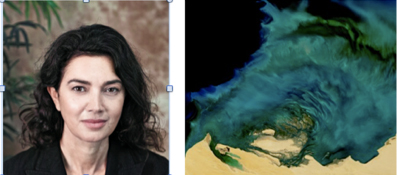
"Climate change is happening - space technologies are essential to understand and adapt to it", Benoit Meyssignac, Climatologist, CNES
During my research, I am particularly interested in the evolution of the global water and energy cycle in response to climate change. Space techniques are used to assess sea level rise, to understand its causes, and to conduct risk studies to help coastal communities.
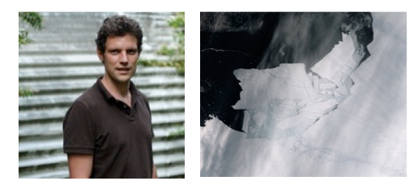
"Parents should encourage their daughters to be interested in the phenomena of the universe, and to help us unravel their mysteries," Marie Korsaga, First woman astrophysicist in West Africa, Ouagadougou, Burkina Faso
When I arrived at the university, enrolled in mathematics and physics, I was confronted with comments such as "it’s too difficult," "that I wasn’t going to make it and that I wasn’t going to be able to have a career in this field," and that even "I was going to remain single for life because no man will want a woman who does this kind of study." Fortunately, I had parents who were understanding and supportive of my career choice.
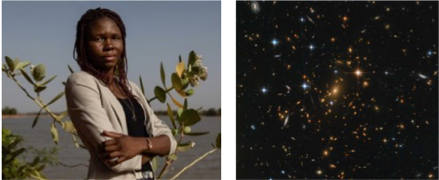
"Thanks to Space, we help farmers to adapt to climate change",
Abdelaziz Kallel, Professor, Research Center in Digital Sfax, Tunisia
With 30% of the cultivated area and 50% of our total agricultural exports, the olive occupies the first place in agriculture in Tunisia. We use satellite images from the Sentinel-2 mission of the European Copernicus program to detect anomalies and water stresses in olive fields that are increasing with climate change.

"Space gives us the means to clear minefields more effectively", Robert Pearson, Demining Systems Expert, Chelton, London, UK
More than 58 countries around the world are affected by the landmine problem and several tens of millions of mines and IEDs need to be cleared. MIDAS (Mine and IED Detection Augmented by Satellite) is an integrated applications program of the European Space Agency, ESA, which aims to clear minefields more efficiently by combining dual sensor technology with precision satellite navigation and Earth observation data
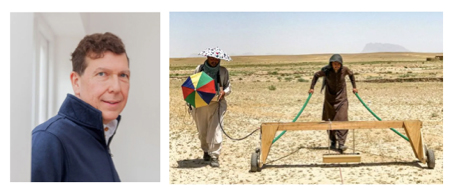
"I study bat migration using data transmitted from the International Space Station," Dina Dechmann, Research Director, Max Planck Institute for Animal Behavior, Radolfzell, Germany
I study the migration of fruit bats in Africa. To understand their migrations, we need very precise data on the conditions of this high-risk journey. As part of the ICARUS (International Cooperation for Animal Research Using Space) project, we have developed transmitters specifically for bats that transmit this essential information to the International Space Station. This innovation is a giant step forward in the study of animal migrations. And it will allow us to better understand climate change, biodiversity preservation and the spread of infectious diseases.
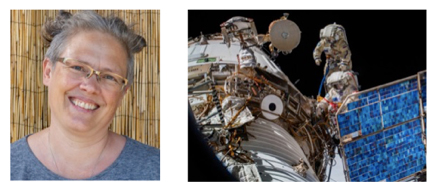
A multimedia platform is connected to Space for Our Planet. The testimonies are accessible on the podcast of the exhibition "Space for Our Planet / L’Espace pour notre Planète", and broadcast on : Apple Podcasts, Google Podcasts, Spotify, Amazon Music, Deezer, Stitcher. For more information: www.space4ourplanet.org
Space for our Planet has been produced in English, French, Dutch and German.
Where to see the Space for our Planet exhibition
27 September to 20 November 2021
Esplanade Solidarność 1980 in front of the European Parliament, Brussels (until October 15, 2021) and then at the Université Libre de Bruxelles (from October 18 to November 20, 2021)
October 1 to November 15, 2021
Grilles of the garden of the Observatoire de Paris - PSL, 98 boulevard Arago, Paris 14e
The exhibition is part of the official program of the Fête de la Science
#PSLFeteLaScience
#FDS2021
Know more
UNOOSA : www.unoosa.org
ESA : www.esa.int, et https://sdg.esa.int/
Commission européenne: https://ec.europa.eu/defence-industry-space/eu-space-policy_en
CNES : www.cnes.fr
NEREUS : www.nereus-regions.eu
G.I.V.E. : https://www.give.education
Observatoire de Paris - PSL : www.observatoiredeparis.psl.eu
TIMKAT : www.timkat.fr
About the curators of the exhibition
Benoit Delplanque has created international multimedia exhibitions such as Les Chemins de l’Ecole, UNESCO Green Citizens, Les Eclaireurs du Changement and Education Transforms Lives for UNESCO. He created TIMKAT in 2007, a production unit specialized in the conception and creation of multimedia stories and exhibitions on social issues.
Fiorella Coliolo is an astrophysicist with a strong background in communication and education. Fiorella has worked on many international exhibitions and events involving different actors: ESA, national space agencies, industries, European scientific institutions and museums. She is currently involved in collaborations with the Italian Space Agency (ASI) and the Aerospace Technology Cluster (DTA) in the Puglia region.
Benoit Delplanque and Fiorella Coliolo conceived the project Space Girls Space Women - Femmes de l’Espace in 2015, an exhibition presenting women’s involvement in Space.

